Our Journey to Zero Waste & Tips We Learned Along the Way
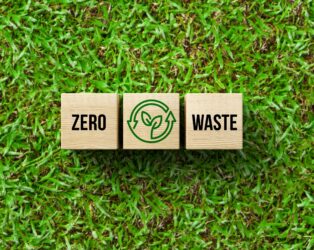 At Second Harvest, we always strive to operate as sustainably as we can by ensuring that as much food as possible reaches those in need. But we wanted to go even further by achieving Zero Waste certification, which required us to update our protocols and practices to be as eco-friendly as possible.
At Second Harvest, we always strive to operate as sustainably as we can by ensuring that as much food as possible reaches those in need. But we wanted to go even further by achieving Zero Waste certification, which required us to update our protocols and practices to be as eco-friendly as possible.
For two and a half years, we undertook a long, complex process to become a designated zero-waste organization. This was no small endeavor. It required our team to go through an intensive training process and address specific parameters through the world’s leading sustainability and health certification organization, Green Business Certification Inc., under the TRUE (Total Resource Use and Efficiency) rating system.
To achieve TRUE zero waste certification, Second Harvest completed more than the 31 required credits during the application process. Second Harvest’s efforts included:
- Creating an environmental purchasing program to focus on buying recycled and eco-friendly products such as paper and janitorial supplies, and training employees on how to find and buy sustainable goods
- Using reusable and multi-use items including hot beverage mugs and utensils in place of disposable items for operational purposes
- Providing partners and pantries with reusable plastic bins to replace cardboard bins that had previously been used to collect and store food
- Utilizing a nearby compost company for any food that is unable to be distributed, thereby reducing the food bank’s carbon footprint
- Switching to 30 percent recycled paper and printing in black and white ink, rather than color
- Swapping from paper to electronic where possible – one switch made in the logistics department led to saving 20,000 sheets of paper.
The result of these efforts was an increase in Second Harvest’s waste diversion rate from 60 percent to 95.2 percent. Less than five percent of what Second Harvest’s operations produce, in terms of unused materials, go to a landfill. Instead, these materials are reused, recycled, and reduced.
During this journey to zero waste certification, we learned a handful of tips and tricks that we’d like to share so that you can reduce your own carbon footprint:
1. Reduce plastic use. One easy way to reduce plastic use is to purchase reusable utensils to keep in your car or at work to avoid using disposable cutlery. Plastic pollution (the accumulation of plastic in the Earth’s environment) can alter habitats and natural processes, reducing ecosystems’ ability to adapt to climate change, affecting livelihoods, food production capabilities and social well-being.
2. Switch to recycled paper. Paper production can lead to deforestation, uses massive amounts of energy and water and contributes to air pollution and waste problems. That’s why we switched our paper to 30% recycled paper – this is an easy switch for us all to make. Recycled paper reduces greenhouse gas emissions, conserves landfill space and reduces energy and water consumption.
3. Replace single-use items with multi-use items. This approach can be as easy as keeping reusable grocery bags in the car rather than purchasing paper or plastic bags to carry groceries home. Try replacing paper towels with old towels or rags for cleaning countertops – it can take some time to make a new habit, but doing so keeps the environment and your wallet healthy in the long run!

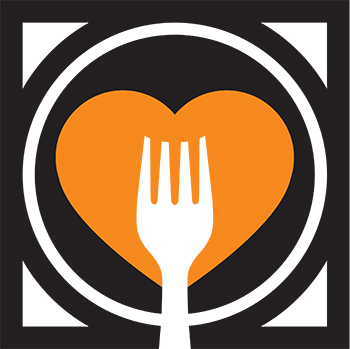
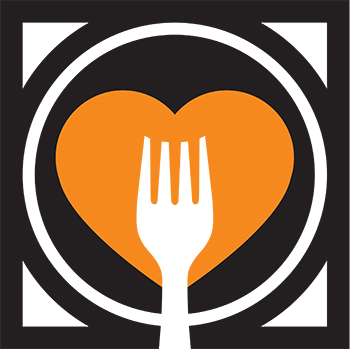
 Jill Wilson decided to volunteer with Second Harvest in 2008 when she was in between jobs and looking for a way to apply her talents that could benefit the community. She arrived one day at Second Harvest’s former distribution center in Orange, ready to serve, and felt immediately connected to the mission.
Jill Wilson decided to volunteer with Second Harvest in 2008 when she was in between jobs and looking for a way to apply her talents that could benefit the community. She arrived one day at Second Harvest’s former distribution center in Orange, ready to serve, and felt immediately connected to the mission.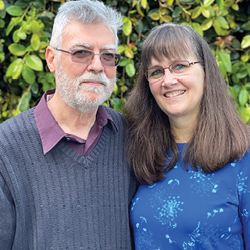 Like Jill and Ian, other friends of the food bank may be looking for ways to connect meaningfully with Second Harvest to help those experiencing hunger in Orange County for years to come. One simple way to make a significant impact, while achieving peace of mind, is by creating a will or revocable living trust with our partner, FreeWill.
Like Jill and Ian, other friends of the food bank may be looking for ways to connect meaningfully with Second Harvest to help those experiencing hunger in Orange County for years to come. One simple way to make a significant impact, while achieving peace of mind, is by creating a will or revocable living trust with our partner, FreeWill.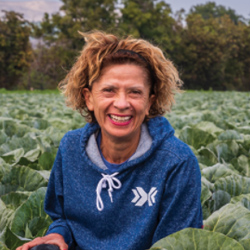 March is National Nutrition Month, an annual awareness campaign that encourages us to learn about nutrition, develop healthy eating habits and discover the fun of being physically active. At Second Harvest Food Bank of Orange County, we strive to provide everyone in Orange County with the nutrition they need to grow and excel in life.
March is National Nutrition Month, an annual awareness campaign that encourages us to learn about nutrition, develop healthy eating habits and discover the fun of being physically active. At Second Harvest Food Bank of Orange County, we strive to provide everyone in Orange County with the nutrition they need to grow and excel in life.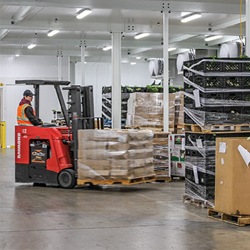 Last spring, here at Second Harvest we completely revamped our focus to proactively purchase fresh nutrition for those in need, ensuring a steady pipeline of protein, dairy, eggs, fruits and vegetables to our approximately 300 partner and program sites. As a next step, we recently unveiled our new, 6,200-square-foot cold storage facility and two additional cold docks that establish a “cold chain” at our distribution center in Irvine. This gives us a total of 14,550 square feet of cold storage, which greatly enhances our ability to source and distribute more nutritious food.
Last spring, here at Second Harvest we completely revamped our focus to proactively purchase fresh nutrition for those in need, ensuring a steady pipeline of protein, dairy, eggs, fruits and vegetables to our approximately 300 partner and program sites. As a next step, we recently unveiled our new, 6,200-square-foot cold storage facility and two additional cold docks that establish a “cold chain” at our distribution center in Irvine. This gives us a total of 14,550 square feet of cold storage, which greatly enhances our ability to source and distribute more nutritious food.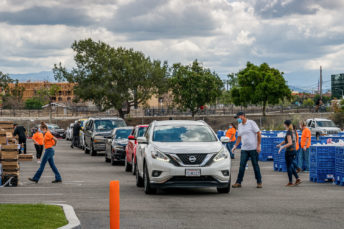 Second Harvest continues to fight increasing food insecurity through our Pop-Up Drive Thru food distributions with the help of many amazing volunteers and it is no surprise that many of them are mothers. Jacqueline is one such volunteer and I wanted to learn more of her story.
Second Harvest continues to fight increasing food insecurity through our Pop-Up Drive Thru food distributions with the help of many amazing volunteers and it is no surprise that many of them are mothers. Jacqueline is one such volunteer and I wanted to learn more of her story.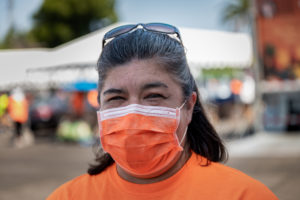 here to volunteer representing other mothers…to give back to the community, to be a role model to my children. As a mother, as a woman, as a friend, as a wife…you have so many hats you have to put on and one of them is giving. When I go home my daughter asks me, “Mom what did you do today?” And I say, “I got to give back to people, people that really don’t have as much as we do.” Hopefully she sees me doing this and then as she gets older, she’ll want to give back just the same way.”
here to volunteer representing other mothers…to give back to the community, to be a role model to my children. As a mother, as a woman, as a friend, as a wife…you have so many hats you have to put on and one of them is giving. When I go home my daughter asks me, “Mom what did you do today?” And I say, “I got to give back to people, people that really don’t have as much as we do.” Hopefully she sees me doing this and then as she gets older, she’ll want to give back just the same way.” Pantry. Their style traditionally has always been very welcoming and focused on building relationships with those they serve. They would put out coffee and pastries and spend time talking with the families who would come early just to socialize.
Pantry. Their style traditionally has always been very welcoming and focused on building relationships with those they serve. They would put out coffee and pastries and spend time talking with the families who would come early just to socialize. One of Nancy’s key volunteers, Mary Kaye, also shared insights. Mary Kaye is an emergency room doctor who has been spending much of her spare time serving at the Saint Timothy pantry. She began volunteering pre-COVID by taking blood pressures on pantry days and translating for Spanish-speaking clients.. All the changes have her missing conversations and connecting with the families they serve.
One of Nancy’s key volunteers, Mary Kaye, also shared insights. Mary Kaye is an emergency room doctor who has been spending much of her spare time serving at the Saint Timothy pantry. She began volunteering pre-COVID by taking blood pressures on pantry days and translating for Spanish-speaking clients.. All the changes have her missing conversations and connecting with the families they serve. can take your blood pressure soon,” and encouraging them.”
can take your blood pressure soon,” and encouraging them.”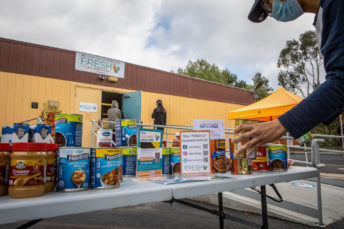 Whatever the situation that keeps students on campus and struggling to feed themselves, the Fresh Basic Needs Hub at UCI remains open to serve them, supported by food from Second Harvest. Student hunger is a serious challenge, made even worse by the pandemic, but Fresh, as it’s called, has the mission to provide for the basic needs of UCI students, allowing them to focus on academics.
Whatever the situation that keeps students on campus and struggling to feed themselves, the Fresh Basic Needs Hub at UCI remains open to serve them, supported by food from Second Harvest. Student hunger is a serious challenge, made even worse by the pandemic, but Fresh, as it’s called, has the mission to provide for the basic needs of UCI students, allowing them to focus on academics.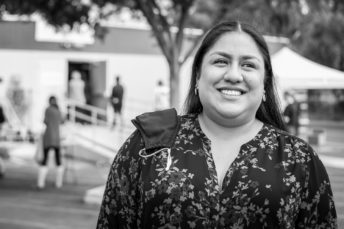
 Last week did not feel hopeful. Seeing the injustice of the past few days makes me cringe. It causes me to grieve when I see people treated unfairly or worse. But I’m choosing to move forward with hope. How can I have hope this week? Because I know Andrea and I see how she treats people who sometimes feel trapped. The team at Fresh, and all the other college pantries in Orange County serve as a lifeline for their students, providing for basic needs and offering a dignified experience for everyone who comes to them for help. Their service is a beacon of hope in the darkness.
Last week did not feel hopeful. Seeing the injustice of the past few days makes me cringe. It causes me to grieve when I see people treated unfairly or worse. But I’m choosing to move forward with hope. How can I have hope this week? Because I know Andrea and I see how she treats people who sometimes feel trapped. The team at Fresh, and all the other college pantries in Orange County serve as a lifeline for their students, providing for basic needs and offering a dignified experience for everyone who comes to them for help. Their service is a beacon of hope in the darkness.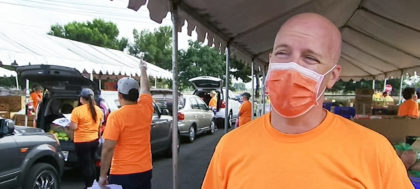
 redirected those emotions toward survival and humility. While it was a very difficult decision, Stephen and Kristina decided that in order to make it through this crisis, they would need to receive assistance the first time in their lives. This is what it means to be newly vulnerable.
redirected those emotions toward survival and humility. While it was a very difficult decision, Stephen and Kristina decided that in order to make it through this crisis, they would need to receive assistance the first time in their lives. This is what it means to be newly vulnerable.